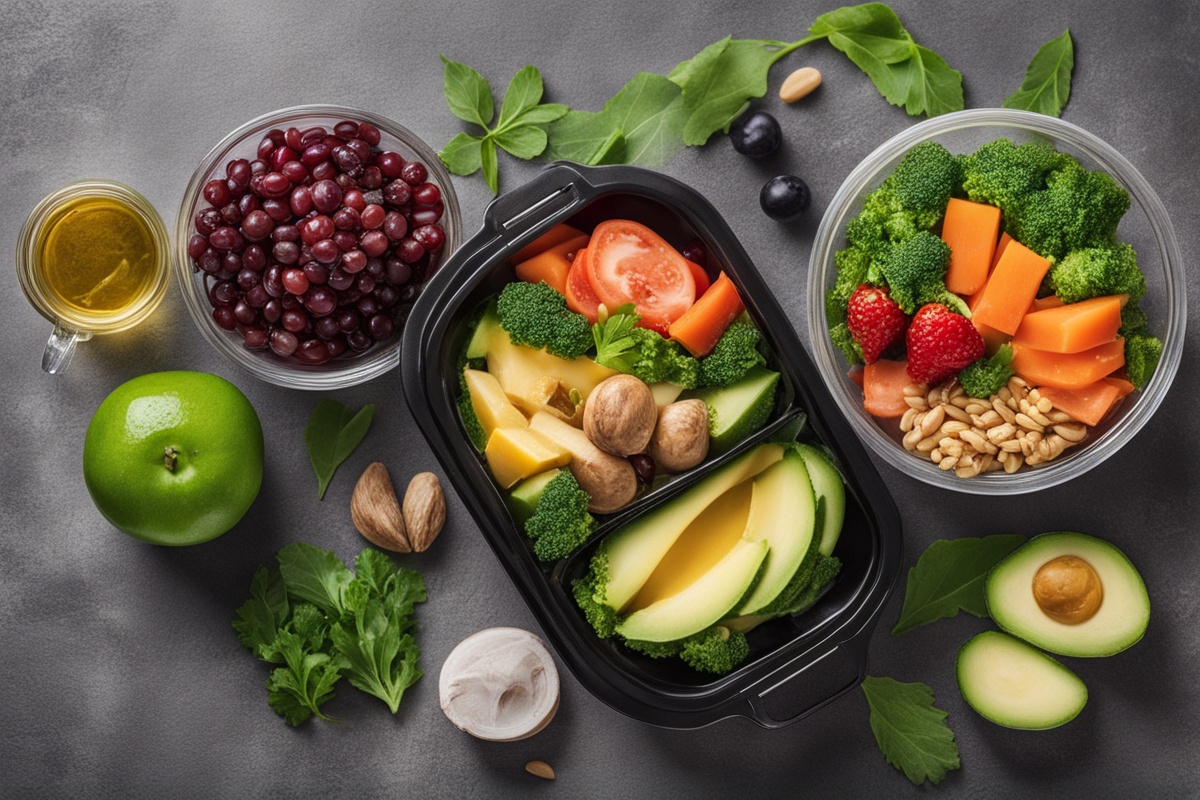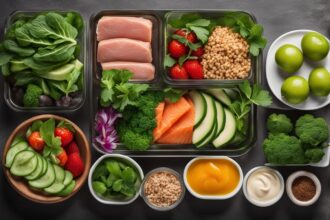Hey there, fellow health enthusiasts! If you’ve been curious about fasting or are already on your fasting journey, you’ve probably wondered how to make it sustainable and stress-free. That’s where meal prep comes in as a game-changer. In this ultimate fasting guide, I’m diving deep into the art of fasting meal prep—how to plan, prepare, and thrive while fasting. Whether you’re practicing intermittent fasting, extended fasts, or religious fasting, having a solid plan can help you stay energized, avoid pitfalls, and maximize the benefits. Let’s explore actionable tips, science-backed insights, and practical strategies to make fasting a seamless part of your lifestyle.
What Is Fasting and Why Does Meal Prep Matter?
Fasting, at its core, is the voluntary abstinence from food and sometimes drink for a specific period. It’s been practiced for centuries across cultures for spiritual, religious, and health reasons. Today, intermittent fasting (IF) has gained massive popularity for its potential benefits like weight loss, improved metabolic health, and even longevity (Mattson et al., 2017). But here’s the catch: without proper planning, fasting can leave you feeling hangry, low on energy, or tempted to overeat during eating windows. That’s why meal prep is a crucial part of any fasting guide. Preparing nutrient-dense meals in advance ensures you break your fast with balanced foods that support your goals, rather than reaching for whatever’s quickest (and often unhealthy).
Understanding Your Fasting Protocol
Before diving into meal prep, it’s important to know your fasting style, as it dictates when and what you’ll eat. Are you following the 16:8 method (fasting for 16 hours, eating during an 8-hour window), the 5:2 approach (eating normally 5 days a week and restricting calories on 2 days), or a 24-hour fast once a week? Maybe you’re doing a religious fast like Ramadan, which involves abstaining from food and water from dawn to dusk. Each protocol has unique needs. For instance, shorter fasting windows might require smaller, frequent meals, while extended fasts call for more substantial, nutrient-packed options to replenish your body. Tailoring your meal prep to your specific fasting plan is key to avoiding nutritional gaps and maintaining energy levels.
Key Benefits of Fasting Meal Prep
Let’s talk about why meal prep should be a cornerstone of your fasting routine. First, it saves time—imagine not having to cook from scratch after a long fast when you’re ravenous. Second, it helps with portion control, which is vital since fasting can sometimes trick your brain into overeating (Tinsley & La Bounty, 2015). Third, prepped meals ensure you’re getting a balance of macronutrients—proteins, fats, and carbs—to support muscle maintenance and energy. Plus, having healthy options ready reduces the temptation to grab processed snacks. Studies suggest that planned eating patterns improve dietary adherence and health outcomes, especially during fasting (Patterson & Sears, 2017). So, let’s break down how to make this work for you.
How to Start Fasting Meal Prep: Step-by-Step
Getting started with meal prep as part of your fasting strategy doesn’t have to be overwhelming. I’ve put together a simple, actionable plan to help you prep like a pro. The goal is to create meals that are easy to store, reheat, and enjoy during your eating windows. Here’s how to do it:
- Plan Your Eating Windows: Check your fasting schedule and decide how many meals or snacks you’ll need during your eating periods. For a 16:8 fast, you might plan two meals and a snack within that 8-hour window.
- Focus on Nutrient Density: Prioritize whole foods like lean proteins (chicken, tofu), healthy fats (avocado, nuts), and complex carbs (quinoa, sweet potatoes) to keep you full and fueled.
- Batch Cook Basics: Prepare large portions of staples like grilled veggies, brown rice, or baked salmon that can be mixed and matched for variety throughout the week.
- Portion and Store: Use airtight containers to divide meals into single servings. Label them with dates to keep track of freshness—most prepped meals last 3–5 days in the fridge.
- Freeze for Longevity: For longer storage, freeze portions of soups, stews, or protein dishes. Just thaw them the night before your eating window.
Best Foods to Include in Your Fasting Meal Prep
Choosing the right foods is a critical part of any fasting meal plan. After hours of fasting, your body craves nourishment that replenishes without spiking blood sugar or causing digestive distress. Research shows that breaking a fast with high-fiber, protein-rich meals can stabilize blood glucose and promote satiety (Johnstone, 2015). Here are some top picks for your prep:
- Eggs: A fantastic source of protein and healthy fats, perfect for a quick post-fast meal like a veggie omelet.
- Leafy Greens: Spinach, kale, and arugula are low-calorie, high-nutrient options to bulk up meals and support digestion.
- Legumes: Lentils and chickpeas provide fiber and protein, keeping you full longer during short eating windows.
- Healthy Fats:
Avoid overly processed or sugary foods when breaking your fast, as they can cause energy crashes and counteract the metabolic benefits of fasting (Harvard Medical School, 2020).
Common Meal Prep Mistakes to Avoid During Fasting
Even with the best intentions, it’s easy to slip up when prepping for a fasting lifestyle. I’ve made some of these mistakes myself, so let me save you the trouble. One big no-no is prepping meals that are too heavy or rich right after a fast—think creamy pastas or fried foods. They can overwhelm your digestive system after hours of rest. Another mistake is not hydrating enough; while meal prep focuses on food, remember that fluids are just as important, especially for extended fasts. Also, don’t skimp on variety. Eating the same meal every day can lead to boredom and nutrient imbalances. Lastly, over-prepping can lead to food waste if you don’t eat everything in time. Start small, test what works, and adjust as you go.
So, what’s the takeaway from this fasting guide? Meal prep is your secret weapon to mastering fasting, whether you’re a beginner or a seasoned faster. By planning ahead, choosing the right foods, and avoiding common pitfalls, you can make fasting a sustainable and rewarding part of your health journey. Remember, it’s not just about skipping meals—it’s about nourishing your body with intention when you do eat. Start with one or two prepped meals this week, tweak your approach based on how you feel, and watch how much easier fasting becomes. Got a favorite fasting recipe or tip? I’d love to hear about it—drop a comment below and let’s keep this conversation going!
References
- Harvard Medical School. (2020). Intermittent fasting: Surprising update. Harvard Health Publishing.
- Johnstone, A. (2015). Fasting for weight loss: An effective strategy or latest dieting trend? International Journal of Obesity, 39(5), 727–733.
- Mattson, M. P., Longo, V. D., & Harvie, M. (2017). Impact of intermittent fasting on health and disease processes. Ageing Research Reviews, 39, 46–58.
- Patterson, R. E., & Sears, D. D. (2017). Metabolic effects of intermittent fasting. Annual Review of Nutrition, 37, 371–393.
- Tinsley, G. M., & La Bounty, P. M. (2015). Effects of intermittent fasting on body composition and clinical health markers in humans. Nutrition Reviews, 73(10), 661–674.
- Volek, J. S., & Phinney, S. D. (2012). The art and science of low carbohydrate living. Beyond Obesity LLC.






